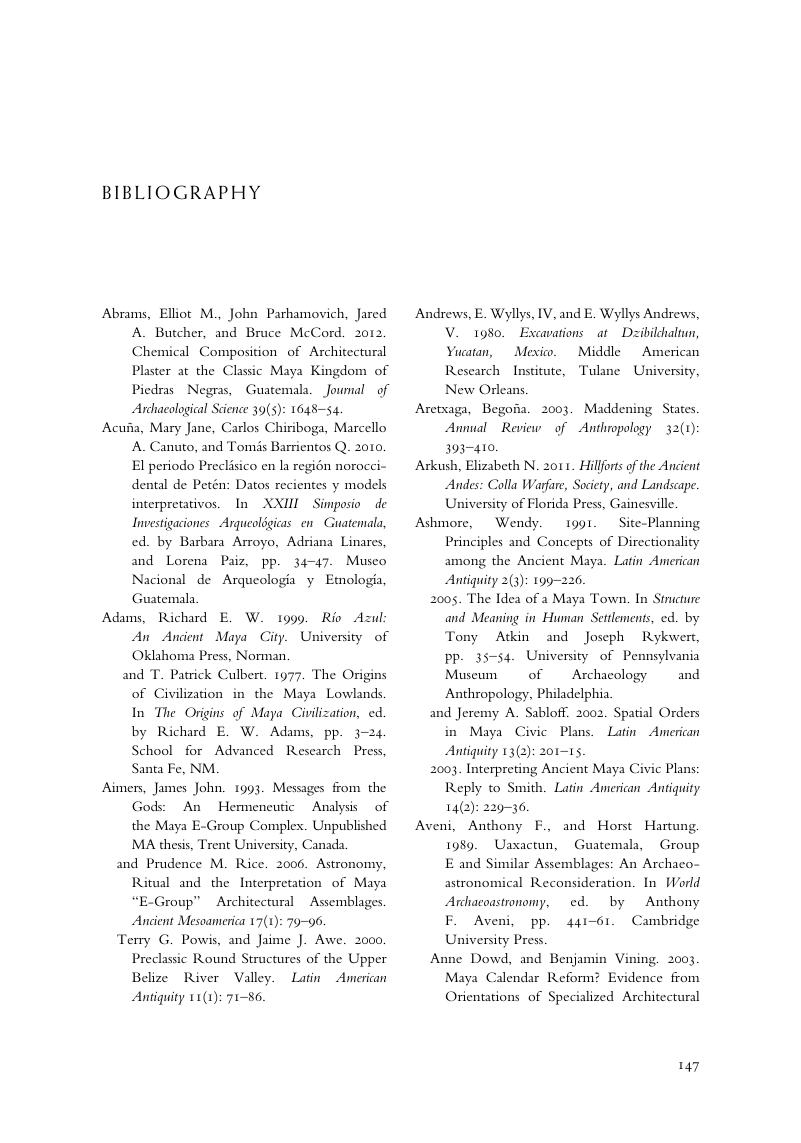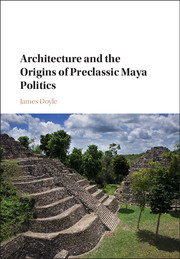Book contents
- Architecture and the Origins of Preclassic Maya Politics
- Architecture and the Origins of Preclassic Maya Politics
- Copyright page
- Contents
- Figures
- Preface and Acknowledgments
- One Introduction
- Two Setting
- Three Mesoamerican and Maya Monumentality, Identity, and Politics
- Four Middle Preclassic Maya E-Group Plazas
- Five The Architecture and Spaces of the Early Ajaw, ca. 300–1 BC
- Six Migration and Abandonment
- Seven The Preclassic Big Picture
- Bibliography
- Index
- References
Bibliography
Published online by Cambridge University Press: 20 April 2017
- Architecture and the Origins of Preclassic Maya Politics
- Architecture and the Origins of Preclassic Maya Politics
- Copyright page
- Contents
- Figures
- Preface and Acknowledgments
- One Introduction
- Two Setting
- Three Mesoamerican and Maya Monumentality, Identity, and Politics
- Four Middle Preclassic Maya E-Group Plazas
- Five The Architecture and Spaces of the Early Ajaw, ca. 300–1 BC
- Six Migration and Abandonment
- Seven The Preclassic Big Picture
- Bibliography
- Index
- References
Summary

- Type
- Chapter
- Information
- Architecture and the Origins of Preclassic Maya Politics , pp. 147 - 167Publisher: Cambridge University PressPrint publication year: 2017

